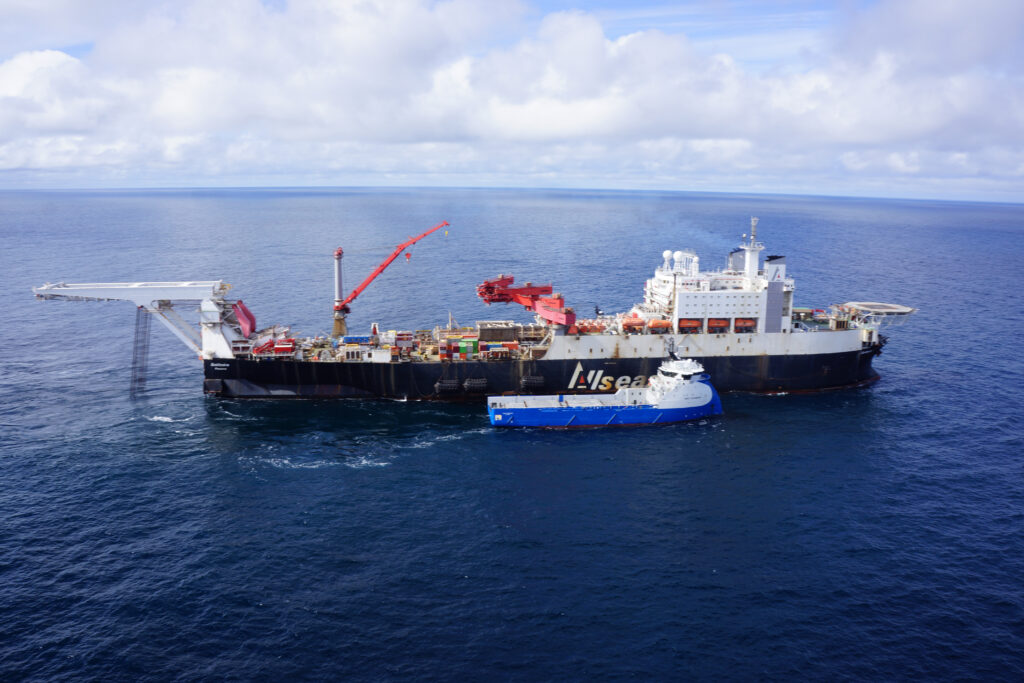Aasta Hansteen – small discovery with big pipeline

After two hectic decades with big discoveries and giant developments, the Norwegian continental shelf (NCS) had moved by the 1990s into a mature phase. A decline in the number and size of new finds meant that companies turned to frontier areas.
The 15th licensing round in 1996 was the first to award deepwater production licences (PLs) in the Norwegian Sea. An area due west of Kristiansund was the most attractive of these allocations, and the big Ormen Lange gas field was proven there in 1997. Deep water also means more difficult development, and big finds were needed to achieve profitability. At the same time, it was hoped to make discoveries beyond Ormen Lange.
Statoil was awarded the operatorship for PL 217, which contained a geological structure known as the Vema Dome. BP became operator of the neighbouring PL 218, which covered the Nyk High.

This part of the Norwegian Sea is 120 kilometres north-west of Norne, then the northernmost field on stream. BP was the first to drill there, in 1997, but was disappointed to find only gas. Statoil followed up with a well in its licence the following year, with the same discouraging result.
New initiatives
The area was neglected for a number of years, until Statoil took over the operatorship of PL 217 in 2006 with an eye to assessing existing discoveries for development and further exploration. Several wells were subsequently drilled with both positive and negative outcomes.

A plan for development and operation (PDO) submitted in 2013 covered three separate formations – Luva, Haklang and Snefrid South. Snefrid North was eventually also included, and work began in 2018. All these names relate to Harald Hårfagre (Fairhair), first king of a united Norway – he was nicknamed Luva, married to Snefrid Svåsedotter, and fought Tore Haklang among others at the decisive naval battle of the Hafrs Fjord in Stavanger.
These discoveries have been unified under the name of Aasta Hansteen, a 19th century painter, author and feminist who was the first Norwegian woman to make a living from art.
The field has been developed with a Spar platform, which features a floating cylindrical support structure moored to the seabed. In addition come two four-well templates and two single wells. The water depth on the field is 1 270 metres – a record for the NCS.
Pipeline with good capacity
Oil can easily be shipped ashore by tanker, but transporting gas is not so simple. That calls for a pipeline to land, where the gas can be liquefied if necessary and exported as LNG. Polarled was therefore an important part of the development solution for Aasta Hansteen. It runs for no less than 482 kilometres from the field to the terminal at Nyhamna between Ålesund and Kristiansund.

Laid by Solitaire, the world’s largest pipelay vessel, this installation comprises no less than 40 000 lengths of 36-inch pipe. Its daily capacity is 58 million standard cubic metres (scm), but Aasta Hansteen’s output amounts to only about 20 million scm per day.[REMOVE]Fotnote: This corresponds to 222 million kWh or almost 14 000 times the annual consumption by an average Norwegian household. So substantial extra quantities can be accommodated.
Polarled has opened the way to exploring for gas volumes in the Norwegian Sea which are too small for their own transport infrastructure, but which can be tied into the pipeline. Six tie-in points are provided where existing and potential discoveries can be connected, but that has so far only occurred with Dvalin. This field sends its gas to Heidrun and from there to Polarled.
Some commentators claimed that the pipeline could impose a loss of more than NOK 10 billion on the Norwegian state, not least after plans to develop the Kristin and Linnorm discoveries were shelved because of insufficient profitability.[REMOVE]Fotnote: https://www.nrk.no/norge/spar-milliardtap-pa-gigant-ror-1.14084171.
But the project was brought in below budget and came on line in 2018. With gas prices at the level prevailing in 2022, the investment in both installations and pipeline will quickly be recovered.[REMOVE]Fotnote: https://www.equinor.com/no/news/archive/2015/09/29/29SepPolarled.
An unusually large number of PDOs are expected in the autumn of 2022, since those submitted by then will qualify for the favourable tax regime introduced in the early stages of the Covid pandemic. These include Asterix, discovered in 2009 and 90 kilometres west of Aasta Hansteen, which is expected to be developed with an export solution via that field and Polarled.
arrow_backPowering Johan Sverdrup from shoreOffshore wind power in South Koreaarrow_forward